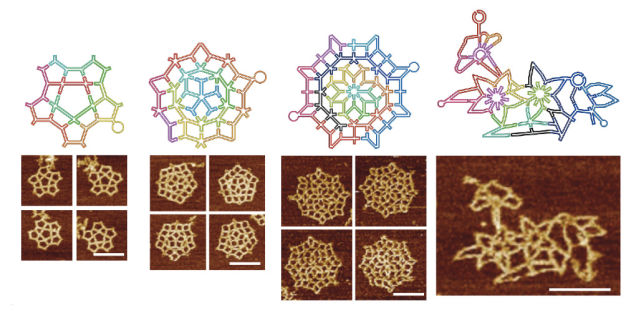New Technique Allows to Fine-Tune DNA Origami

 DNA origami is more promising than ever thanks to the work of Hao Yan’s team from Arizona State University’s Biodesign Institute. Their innovative technique allows to design highly complex and programmable wireframe DNA structures with multi-arm junctions and controlled angles. The study was published in Nature Nanotechnology.
DNA origami is more promising than ever thanks to the work of Hao Yan’s team from Arizona State University’s Biodesign Institute. Their innovative technique allows to design highly complex and programmable wireframe DNA structures with multi-arm junctions and controlled angles. The study was published in Nature Nanotechnology.
DNA origami is a discipline that uses DNA as a construction material rather than as a means of carrying genetic information. Scientists take advantage of the different binding strength of the four base pairs depending on their position in the DNA strand to construct 2D and 3D nanostructures. Roughly, the current method consists of folding a long DNA strand with the aid of several short staple strands, thus acquiring the desired shape. These structures are usually formed by packed parallel helices. DNA origami has potential clinical applications: tests are being conducted to build drug delivery vehicles, molecular computers or nanorobots.
A more precise branching and curving
DNA origami has proven useful but it’s constrained by local symmetry restrictions that do not allow great design control or precision. Yan and colleagues resolved to create wireframe structures, skeletal 3D models of lines and vertices. The new design principles allows precise fine-tuning of DNA structure; it is now possible to fuse 10 DNA strands at each vertex and to modify the angle of each branch. A scaffold strand passes through the structure touching all lines of the wireframe, and staple strands help achieve the final shape. Yan’s team obtained 2D designs with quasi-crystalline patterns and curvilinear arrays or variable curvatures, and 3D designs including a complex snub cube and a reconfigurable Archimedean solid. The accuracy of the designs was confirmed by atomic force microscopy.
Source: Gizmodo
